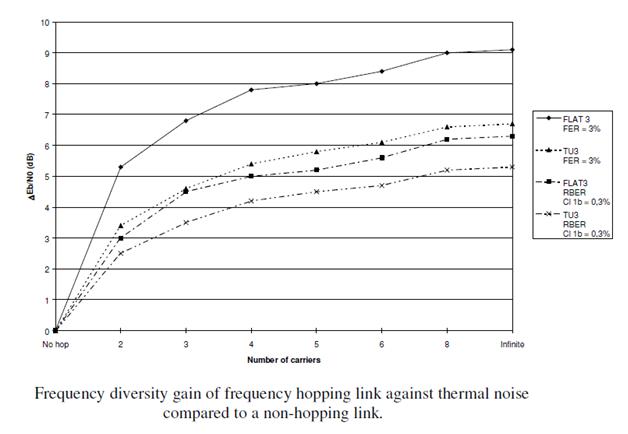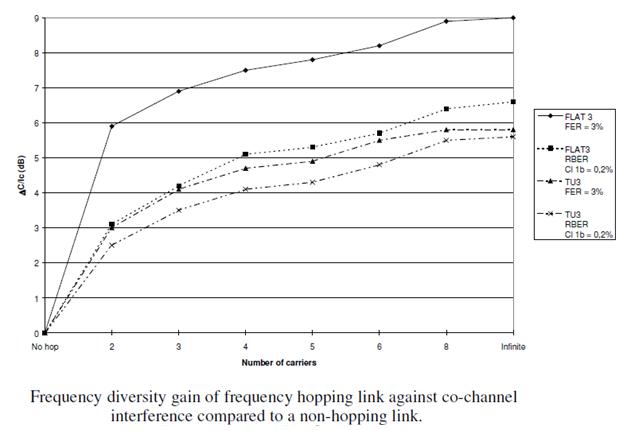Cyclic vs. Random Hopping Sequences
Both cyclic and random hopping modes are available in GSM.
- In the cyclic mode the frequencies are changed sequentially from the lowest frequency to the highest as defined in the MA-list.
- In random mode the frequency to be used for each burst is selected from the MA-list by a predefined pseudo random sequence. This means that the same frequency may be used for a couple of consecutive bursts and the frequencies are not used evenly in a short time scale.
Thus, the optimum frequency diversity gain is possible to achieve only if the cyclic hopping is used. As the number of frequencies becomes larger the difference between the cyclic and the random mode becomes small.
Simulated Frequency Diversity Gains


The simulations show a very significant gain for FLAT3 channel compared to the TU3 channel. This happens because the TU3 channel includes several propagation paths having statistically independent fading conditions and it is thus providing path diversity that helps to achieve the performance targets even in the non-hopping case.
The results of this simulation represent a best possible case, because the fading on the used frequency channels is assumed uncorrelated and the cyclic hopping mode is used. In real life, the frequencies are not necessarily uncorrelated and the random hopping is used to maximise the interference diversity gain. Also, the presented gains are not achievable in uplink direction if a proper diversity reception (about 4 dB gain) method is already in use at base stations.
According to the simulations, the performance of the SACCH / SDCCH and TCH for the cases of non hopping and ideal FH as a function of C/I (according to 05.05 test conditions and TU3) are presented in the following:
The frequency diversity gain of the SACCH / SDCCH against TCH for the cases of non hopping and ideal FH as a function of C/I, with 2%FER.
In the non hopping mode, the SACCH is more robust than the TCH/FS, whereas in the FH mode they perform equal.